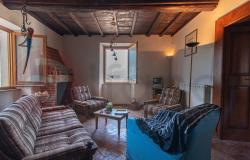The museum, which commemorates the English Romantics life in the Italian capital, celebrates its centenary this year but requires money to secure its long-term future.
Lavish, opulent, corrupt, passionate, Rome exerted an irresistible appeal on the English Romantics. Percy Bysshe Shelley lost his son in the city, and was himself buried there after dying in a shipwreck off the Livorno coast. His wife Mary also spent time in the Italian capital, although she left Italy after Shelley’s death. And John Keats went to Rome to recover from his illness—but stayed there to die.
Soon after his death, the Casina Rossa, the house where Keats spent his last days, became a magnet for writers, artists and poets from around the world.
“The lodging house became, to an extent, a place of pilgrimage for admirers of Keats,” explains Harriet Cullen, Chair of the Keats Shelley Memorial Association. “It was occupied throughout the nineteenth century by a succession of artistically minded foreigners—notably, towards the end, by the colourful Swedish physician Axel Munthe.” Over time, however, the house fell into disrepair and even risked conversion into a hotel—until American poet Robert Underwood Johnson took the matter in his own hands. Noting the building’s desperate state, he made enquiries and called upon his contacts among the British and American literati who lived in Rome. Together, they set out to raise funds in the UK, the United States and Italy. They were able to buy the place at the end of 1906, and, two and a half years later, they opened a museum devoted to Keats and his fellow Romantics.
Over time, however, the house fell into disrepair and even risked conversion into a hotel—until American poet Robert Underwood Johnson took the matter in his own hands. Noting the building’s desperate state, he made enquiries and called upon his contacts among the British and American literati who lived in Rome. Together, they set out to raise funds in the UK, the United States and Italy. They were able to buy the place at the end of 1906, and, two and a half years later, they opened a museum devoted to Keats and his fellow Romantics.
Since then, the Keats Shelley House has attracted thousands of literary tourists, who come to see the manuscripts, painting, sculpture and relics commemorating Keats and Shelley’s life in Rome, but also to consult the museum’s library, which has one of the most comprehensive collections of Romantic literature. Like a hundred years ago, however, the house is once again in need of funds. Money is required for two urgent building projects—setting up storage facilities in the 18th century cellar, and creating an exhibition space, shop, ticket desk, public bathroom, tearoom and terrace on the first floor. The total needed is about £220,000 (about $313,600 or €238,250), of which the museum has already raised £37,000 (about $52,750 or €40,000).
Like a hundred years ago, however, the house is once again in need of funds. Money is required for two urgent building projects—setting up storage facilities in the 18th century cellar, and creating an exhibition space, shop, ticket desk, public bathroom, tearoom and terrace on the first floor. The total needed is about £220,000 (about $313,600 or €238,250), of which the museum has already raised £37,000 (about $52,750 or €40,000).
Beyond this, the Keats Shelley Memorial Association, which runs the museum and looks after Keats and Shelley’s graves, is also trying to build an endowment fund of £1 million (about $1.4m or €1.08m) to secure the house’s long-term future. For this reason, they have launched an international fundraising appeal to coincide with the house’s centenary.
“The centenary is the right time to celebrate the past and, most importantly, to plan for the future. Our plan is to safeguard the future of the House, and its unique collection, for a further hundred years, and to adapt it sensitively to the needs of the twenty-first century,” says museum curator Catherine Payling MBE. “As a British museum overseas, we are not eligible for UK public funding, although we enjoy a small degree of Italian Comune support. We are almost entirely dependent on our own entrance fees and on the generosity of individuals.”
British poet laureate Andrew Motion, who is a biographer of Keats, has lent his weight to the fundraising initiative. “The Keats-Shelley house in Rome is one of the world’s best-loved places of literary pilgrimage, and an increasingly important resource for scholars of Romantic literature,” he says. “For both reasons, it deserves the most generous support.”
If you wish to donate, visit http://www.keats-shelley-house.org/donating.php for more details.
The Keats Shelley House is in Piazza Di Spagna 26, Rome (+39 06 97250048, www.keats-shelley-house.org).









